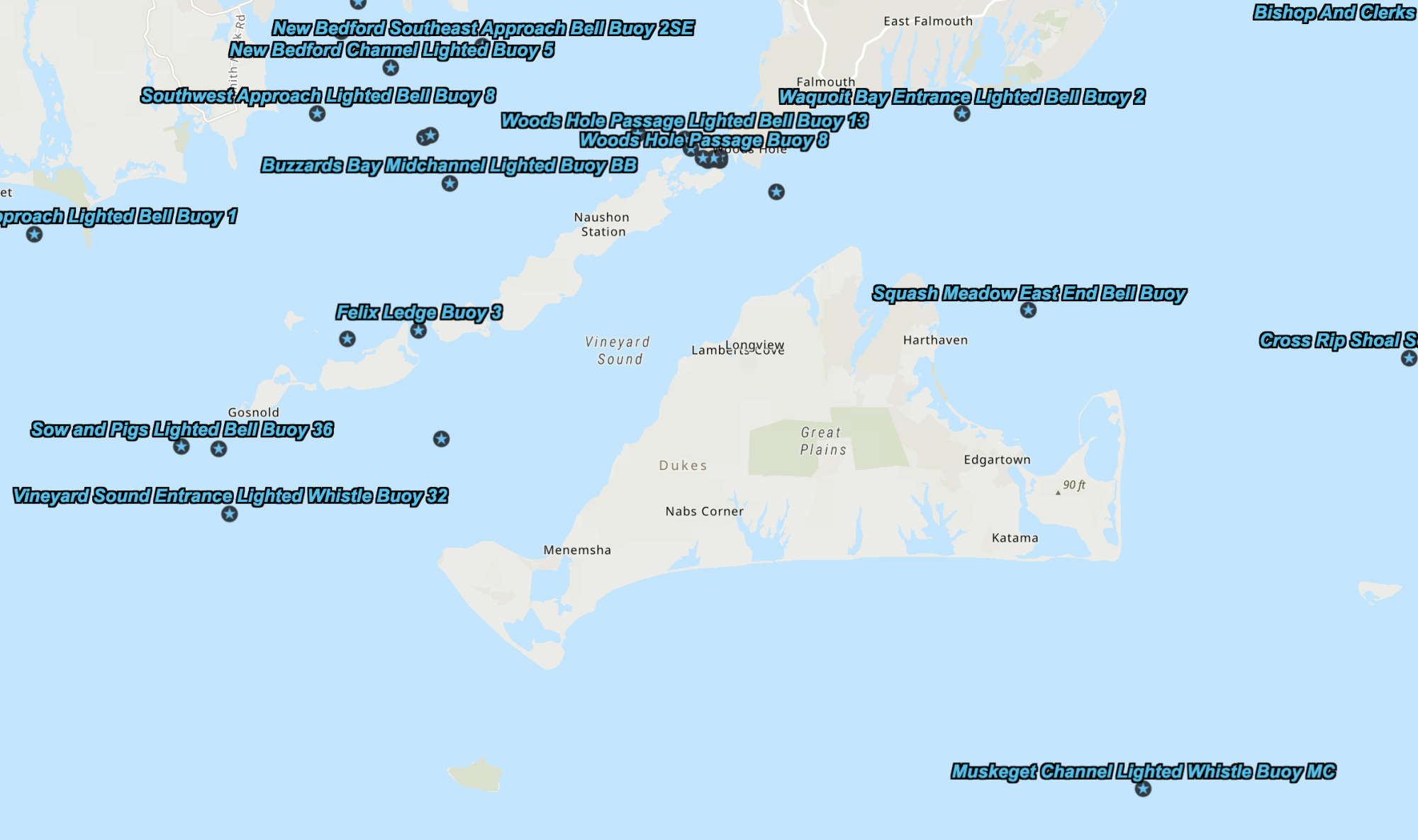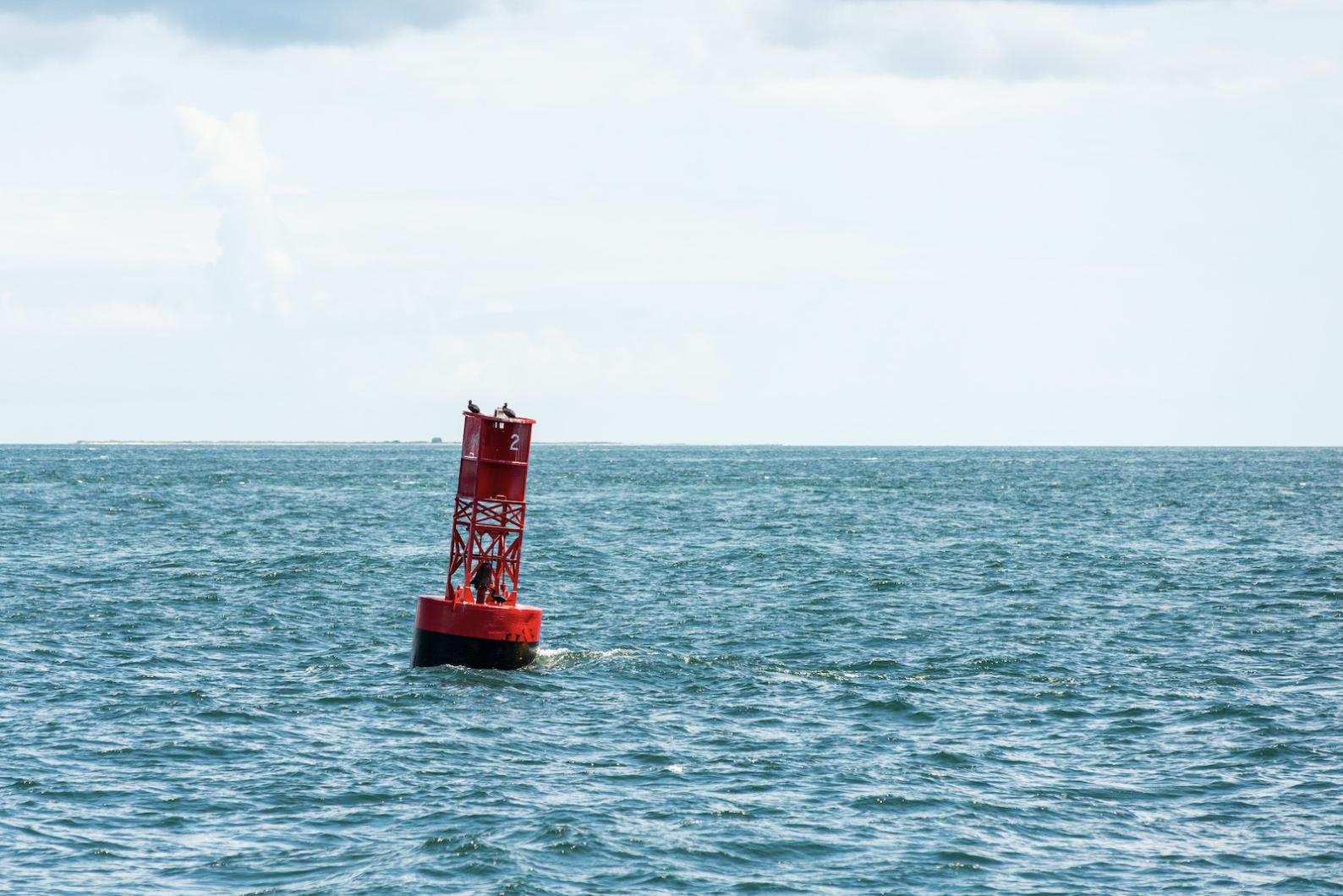A U.S. Coast Guard plan to remove hundreds of navigation buoys in the northeast, including about 20 around the Vineyard, Woods Hole and Gosnold, has raised concerns with some Island mariners.
Of the 4,700 buoys that line the waterways from New York to Quoddy Head at the Canadian border, the federal agency is proposing to pull 350 navigation buoys. The effort has been in the works for the last two years, officials say, and is being done in an attempt to “rightsize” the number of navigation aids at a time when nearly every boat has a GPS, electronic navigation charts and other technically advanced aids.
Matthew Stuck, the Coast Guard’s first district chief of waterways management, said that some of the first wooden navigation markers off the coast of New England were put in place in the late 1600s, and the number of buoys has grown over the centuries. With the new navigational tools, he said it is time to rethink how many buoys are necessary in the water.
“Those things have all changed,” Mr. Stuck said in an interview with the Gazette. “With that, the Coast Guard looks at all the ways to rightsize the system to the ways mariners navigate.”

The Coast Guard is targeting buoys that it deems less essential to navigation. Among these are seven in the waters between Woods Hole harbor and the beginning of the Elizabeth Islands chain, the Squash Meadow East End Bell Buoy off Oak Bluffs, a buoy off Menemsha at the entrance to Vineyard Sound, several others around Cuttyhunk and a buoy that marks the end of the Muskeget Channel commonly referred to as the “Hooter” for the sound it makes as it bobs up and down.
Mr. Stuck said that fewer buoys would also make it easier and more econmical for the Coast Guard to maintain the rest of the aids to navigation across the east coast.
“[Navigation aids] tend to accumulate, rather than optimize,” he said.
The Coast Guard is soliciting public comment on the proposal and some Islanders are wary of taking out buoys in the name of efficiency.
“I think it’s a bad idea,” said Kurt Freund, who runs Fishsticks Charters on the Vineyard. “I think that some of the buoys are absolutely essential.”
He worried about creating an overreliance on electronic navigation aids, and said that these markers can be helpful when calamity strikes and GPSs fail.
“I know people think they can rely on GPS for everything, but that’s probably not a good idea,” Mr. Freund said.
Brice Contessa, the charter fishing captain behind Martha’s Vineyard Outfitters, worried most about removing any buoys out of Woods Hole, a busy port with a lot of shallow water.
“It’s asking for trouble,” he said. “I think that there’s probably a lot of ways that the Coast Guard could make amendments to their budget, but I don’t think taking the buoys out of Woods Hole is one of them.”
The Steamship Authority is aware of the proposal and is still considering the potential ramifications before weighing in, said spokesperson Sean Driscoll last week.
From his perch in Menemsha, Chilmark harbor master Ryan Rossi wasn’t too concerned about the idea, saying it doesn’t affect any buoys near the town harbor. The closest buoy to his port that is marked for removal is more of a shipping aid, than anything for pleasure boats that frequent his harbor.
“It doesn’t concern me in the least,” he said.
While it may affect boaters who come to the Vineyard, Gary Kovack, the new Edgartown harbor master, said it likely wouldn’t cause any issues for the town.
“There’s not really much in Edgartown’s area of responsibility that will be affected,” he said, before adding that people should pay attention to the changes to make sure they are prepared.
The Coast Guard is urging mariners to give feedback on the proposal by June 13. There is no timeline for removal right now, according to Mr. Stuck.
“If we get feedback that leads us to determine that we want to change up the proposal… those are all things that we want to be intentional about,” he said.
A map of the proposed buoys can be found here. Comments need to be sent via email to D01-SMB-DPWPublicComments@uscg.mil.







Comments (17)
Comments
Comment policy »